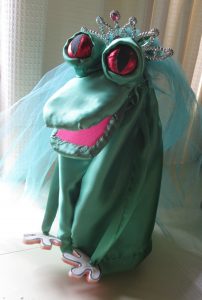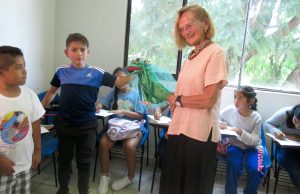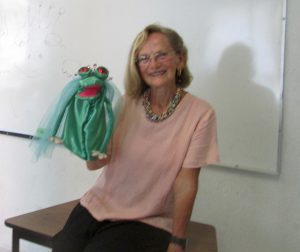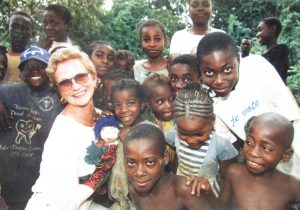It’s back-to-school time everywhere for kids of all ages and even for a certain frog puppet I know and love named Rana.

For several years Rana attended — well, entertained the youngest Mexican children at — a little after-school English-language school program in the Guadalupe neighborhood here in San Miguel de Allende. Sadly, that school has since closed.
So this week Rana entered a new (for her) school, where she was welcomed by a lively and receptive group of eight-to-ten-year-olds whose English-language skills were already impressive.


From a worksheet handed out to all, Rana introduced herself and shared with the children her purpose, asking them to repeat each of her lines:
Frogs are FUN!
I am one.
I am a Frog Queen.
I have a kingdom!
I am a GOOD queen.
I love children.
I am a teacher, too.
And today I will teach you:
“WHAT IS THIS?”
From this point, she asked the kids to each hold up an item and ask her in English, “What is this?” as if this were an exercise in “stump the frog.”
One boy held up his pencil. “I know what that is!” Rana enthused. “That is a PENCIL. Everybody repeat after me: ‘That is a pencil.’” And so on, around the room, with the kids holding up pictures of things or pointing to their clothing or shoes.
When Rana got tired and had to rest (teaching takes a lot out of a frog), I answered the children’s questions about my own life and my love of puppets.
I explained, in slow English, that I’d lived in Africa for almost nine years. (I drew a map of the continent of Africa on the white board and indicated the three African countries where I’d lived for several years.) I told them that while in the Peace Corps (I explained what the Peace Corps is) in French-speaking Gabon, Central Africa, I taught health and nutrition to mothers and children.
“I used handmade puppets to teach the Gabonese children health lessons through songs. Would you like to learn one of the songs I taught them?”
These attentive Mexican children nodded, wide-eyed.
“Okay! Sing along with me:
Pour avoir la bonne santé [to have good health],
Lavez les mains [wash your hands]
A l’eau et au savon! [with water and soap].”
(And they thought they were there to learn English!)

Then one of the Mexican children asked what I had liked about living in Africa.
“Many things,” I said, “but mostly the people. The Africans I came to know were not at all rich in dinero but they were immensely rich in their hearts and in their spirits. Very kind and generous people.” So much like Mexicans, I wanted to add, and so unlike too many financially well-off Americans I’ve known.
The kids continued asking me questions while Rana snoozed. My heart danced. This is the purpose of education, I thought to myself: to inspire curiosity, to foster questioning, to reward our students’ quest for answers — or at least to try.
